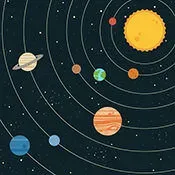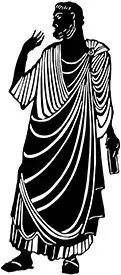 In the beginning of civilization, a fascination with colored gemstones began that is still thriving today. Back then, people thought colored gemstones had innate magical powers that would help the wearer with various aspects of his or her life. Each particular stone was thought to possess a specific magical power that would bring many positive attributes to the life of its wearer. These powers could manifest themselves in physical or mental ways. For example, rubies were thought to be good for the heart, and for those who were experiencing exhaustion. Emeralds were thought to be able to prevent infections and diseases, and could rid a person of negativity. People also associated different colored gemstones with different aspects of life. For example, the red of
In the beginning of civilization, a fascination with colored gemstones began that is still thriving today. Back then, people thought colored gemstones had innate magical powers that would help the wearer with various aspects of his or her life. Each particular stone was thought to possess a specific magical power that would bring many positive attributes to the life of its wearer. These powers could manifest themselves in physical or mental ways. For example, rubies were thought to be good for the heart, and for those who were experiencing exhaustion. Emeralds were thought to be able to prevent infections and diseases, and could rid a person of negativity. People also associated different colored gemstones with different aspects of life. For example, the red of ![]() ruby represented the essence of life, and the blue of
ruby represented the essence of life, and the blue of ![]() sapphire represented the heavens.
sapphire represented the heavens.
 In Mesopotamia, ancient Egyptians began to draw parallels between colored gemstones and the celestial lights. Each individual gemstone was assigned to a different planet of the sun. Life on earth, and the twinkle of gemstones, were thought to be connected to the twinkle of the stars.
In Mesopotamia, ancient Egyptians began to draw parallels between colored gemstones and the celestial lights. Each individual gemstone was assigned to a different planet of the sun. Life on earth, and the twinkle of gemstones, were thought to be connected to the twinkle of the stars.
 The Chaldeans, the last peoples to rule Mesopotamia, made a chart, linking each gemstone with one of the planets. It read like this:
Sapphire: Saturn
Jacinth: Jupiter
Diamond: Sun
Ruby: Mars
Emerald: Venus
Agate: Mercury
Selenite: Moon
The Chaldeans, the last peoples to rule Mesopotamia, made a chart, linking each gemstone with one of the planets. It read like this:
Sapphire: Saturn
Jacinth: Jupiter
Diamond: Sun
Ruby: Mars
Emerald: Venus
Agate: Mercury
Selenite: Moon
 The ancient Greeks also assigned different stones to particular stars. They revered the times when the sun appeared in one of the twelve major constellations and assigned each particular gemstone to each constellation. These assignments were based on a few different factors; the color of the gem, and the associations the color had, the supposed powers each gem possessed, as well as the powers and colors associated with each sign.
The ancient Greeks also assigned different stones to particular stars. They revered the times when the sun appeared in one of the twelve major constellations and assigned each particular gemstone to each constellation. These assignments were based on a few different factors; the color of the gem, and the associations the color had, the supposed powers each gem possessed, as well as the powers and colors associated with each sign.
 In the beginning, it seems that every person who could afford to, bought one of each of the twelve stones, and wore each stone in correspondence with its particular month, in the belief that during that month, the stone would be the most powerful. After a while however, this practice ended, and the practice of only wearing the stone associated with his or her particular zodiac sign began.
In the beginning, it seems that every person who could afford to, bought one of each of the twelve stones, and wore each stone in correspondence with its particular month, in the belief that during that month, the stone would be the most powerful. After a while however, this practice ended, and the practice of only wearing the stone associated with his or her particular zodiac sign began.
 In the Roman imperial period, colored gemstone rings began to represent power. Many of these gemstones were engraved with symbols of the zodiac signs. Most of these engraved stones were carnelians and
In the Roman imperial period, colored gemstone rings began to represent power. Many of these gemstones were engraved with symbols of the zodiac signs. Most of these engraved stones were carnelians and ![]() onyx, however sometimes rubies and sapphires were used as well.
onyx, however sometimes rubies and sapphires were used as well.
 The idea that a special stone was dedicated to every zodiac sign, and that each stone possessed a magical virtue, was first actually seen in the writings of Josephus, in the first century. This concept may have come from the association with the twelve stones in the great breastplate of the Jewish high priest. In the writings of St Jerome, in the early part of the fifth century, it is stated again, that there is a connection between the twelve months of the year, the twelve zodiac signs, and the twelve stones of the high priest's breastplate. St Jerome was one of the fathers of the Latin Church and the first person to translate and publish a Latin version of the Bible, which was established as the official version of the Scripture for the Roman Catholic Church.
The idea that a special stone was dedicated to every zodiac sign, and that each stone possessed a magical virtue, was first actually seen in the writings of Josephus, in the first century. This concept may have come from the association with the twelve stones in the great breastplate of the Jewish high priest. In the writings of St Jerome, in the early part of the fifth century, it is stated again, that there is a connection between the twelve months of the year, the twelve zodiac signs, and the twelve stones of the high priest's breastplate. St Jerome was one of the fathers of the Latin Church and the first person to translate and publish a Latin version of the Bible, which was established as the official version of the Scripture for the Roman Catholic Church.
 As G. F. Kunz, America's leading gemologist from the beginning of the 20th century points out in his book, The Curious Lore of Precious Stones, "There is no doubt that the owner of a ring or ornament set with a birthstone is impressed with the idea of possessing something more intimately associated with his or her personality than any other stone, however beautiful or costly. The idea that birthstones possess a certain indefinable, but none the less real significance has long been present, and still holds a spell over the minds of all who are gifted with a touch of imagination and romance. "
As G. F. Kunz, America's leading gemologist from the beginning of the 20th century points out in his book, The Curious Lore of Precious Stones, "There is no doubt that the owner of a ring or ornament set with a birthstone is impressed with the idea of possessing something more intimately associated with his or her personality than any other stone, however beautiful or costly. The idea that birthstones possess a certain indefinable, but none the less real significance has long been present, and still holds a spell over the minds of all who are gifted with a touch of imagination and romance. "
 It has been said that in the West, the practice of wearing a particular stone as your zodiac stone, or birthstone, was picked up in Poland, in the eighteenth century. However, the Gemological Institute of America claims the origin of the custom came from Germany around 1562.
It has been said that in the West, the practice of wearing a particular stone as your zodiac stone, or birthstone, was picked up in Poland, in the eighteenth century. However, the Gemological Institute of America claims the origin of the custom came from Germany around 1562.